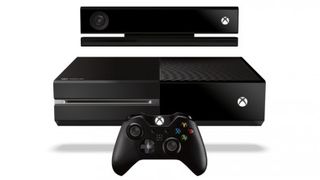The future of wireless: WiGig and 802.11ah
One does speed, the other offers massive range
What kind of gadgets need WiGig?
We're talking video and 4K.
"Household devices such as gaming consoles and video cameras require the ability to transfer large volumes of data to take them to the next level, and the consumer will no doubt benefit from this technology," says Neuberger. "Home computer equipment will be able to become increasingly wireless as short distance, high volume data transfer becomes far better."

Could WiGig run into problems?
The new Wi-Fi technologies don't come without challenges. "The higher frequencies are less able to penetrate buildings and so have a shorter effective range than the Wi-Fi technologies that consumers have become used to," says Neuberger. "This is why, for now, I predict that WiGig will be used alongside existing 2.4GHz and 5GHz frequencies commonly used in households, rather than as a replacement."
Neuberger also predicts that as connectivity options for households become increasingly complex we will see a growing industry in helping consumers create low cost home networks.
What is Hotspot 2.0?
"Hotspot 2.0 will enable any end-user to land in a foreign country and look for a Wi-Fi network, rather than a phone network, based on their roaming agreement," says Wheeldon. An initiative based on the 802.11u standard, Hotspot 2.0 is set to change the way we all use free Wi-Fi.
Take those long lists of available Wi-Fi networks, all with a padlock icon next to them, or not. "If it is unlocked you have to ask yourself 'what's on the other side?' It could be paid-for, it could be looking to hijack your information or, as happens many times, nothing happens, as the internet isn't working or it won't connect because it's oversubscribed," says Wheeldon. "The best case scenario is you connect, and then you have to open a browser and go through a registration process."
Step forward Hotspot 2.0, whereby the Wi-Fi provider will broadcast much more detail – you'll instantly be able to see if the Wi-Fi is open, paid-for, whether it requires registration or whether it's being overused already.
Are you a pro? Subscribe to our newsletter
Sign up to the TechRadar Pro newsletter to get all the top news, opinion, features and guidance your business needs to succeed!
"You can make informed decisions about the network very quickly," says Wheeldon. "It will also create a seamless experience where you never interact with the network if you already have credentials in place. That means, if your mobile provider, broadband provider, hardware provider or anyone else has a pre-agreed roaming agreement with the network, they can make all those decisions in the background and just connect you."

How important is Wi-Fi for the future of mobile?
The stunning growth of the mobile internet is fostering both Wi-Fi innovations and the spread of Wi-Fi. In 2013, mobile data traffic was nearly twelve times the size of the entire global internet in 2000, while global mobile data traffic grew by 70% in 2012 and the average smartphone usage rose by 81%.
"Wi-Fi usage will accelerate further, and by 2020 both cellular and Wi-Fi frequency will become completely saturated," says Wheeldon. "This, along with the increase in mobile data usage, is expected to put huge pressure on 3/4/5G networks, creating a need for more blanket coverage while leading to changes in frequency."
Jamie is a freelance tech, travel and space journalist based in the UK. He’s been writing regularly for Techradar since it was launched in 2008 and also writes regularly for Forbes, The Telegraph, the South China Morning Post, Sky & Telescope and the Sky At Night magazine as well as other Future titles T3, Digital Camera World, All About Space and Space.com. He also edits two of his own websites, TravGear.com and WhenIsTheNextEclipse.com that reflect his obsession with travel gear and solar eclipse travel. He is the author of A Stargazing Program For Beginners (Springer, 2015),

